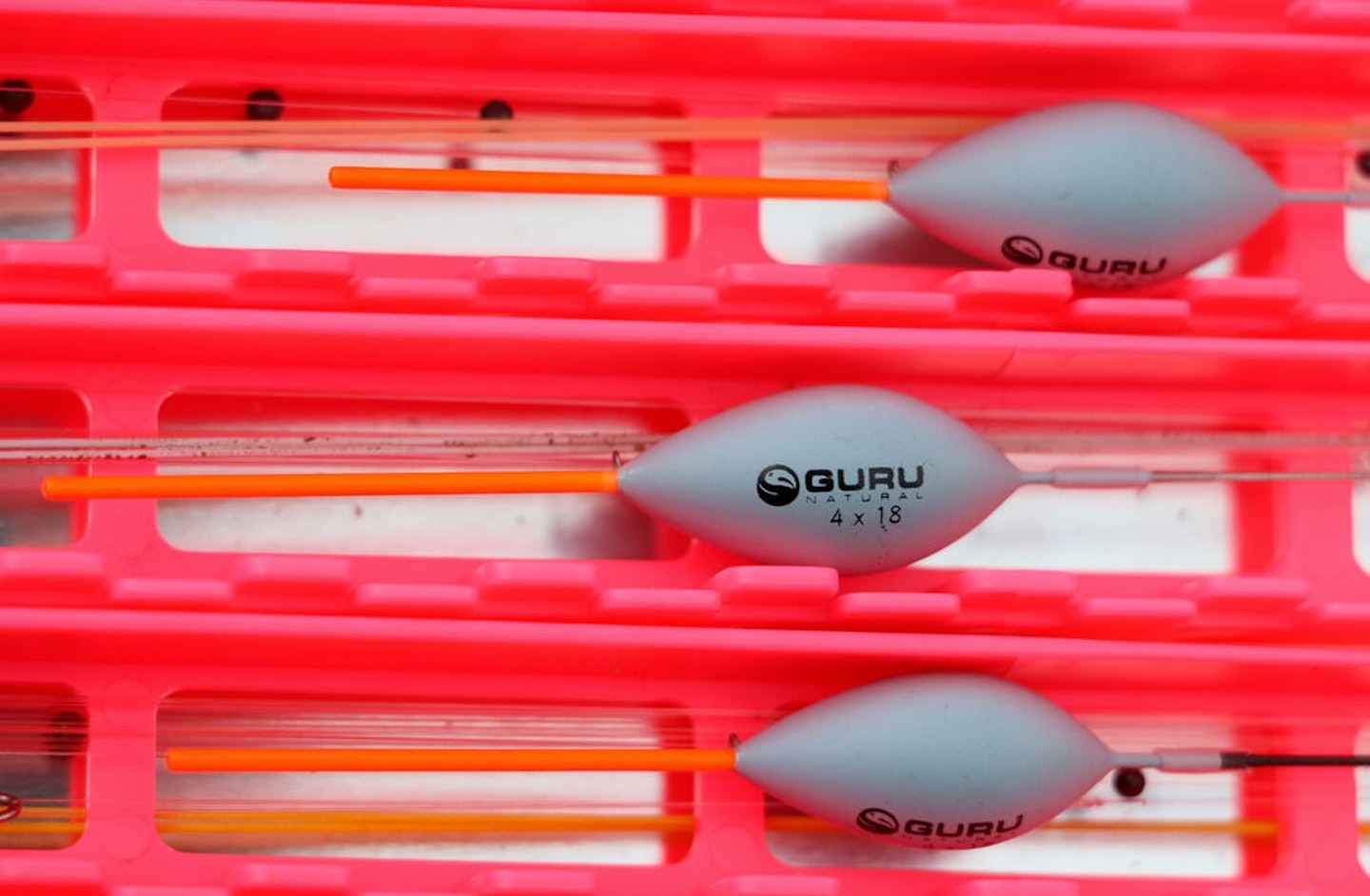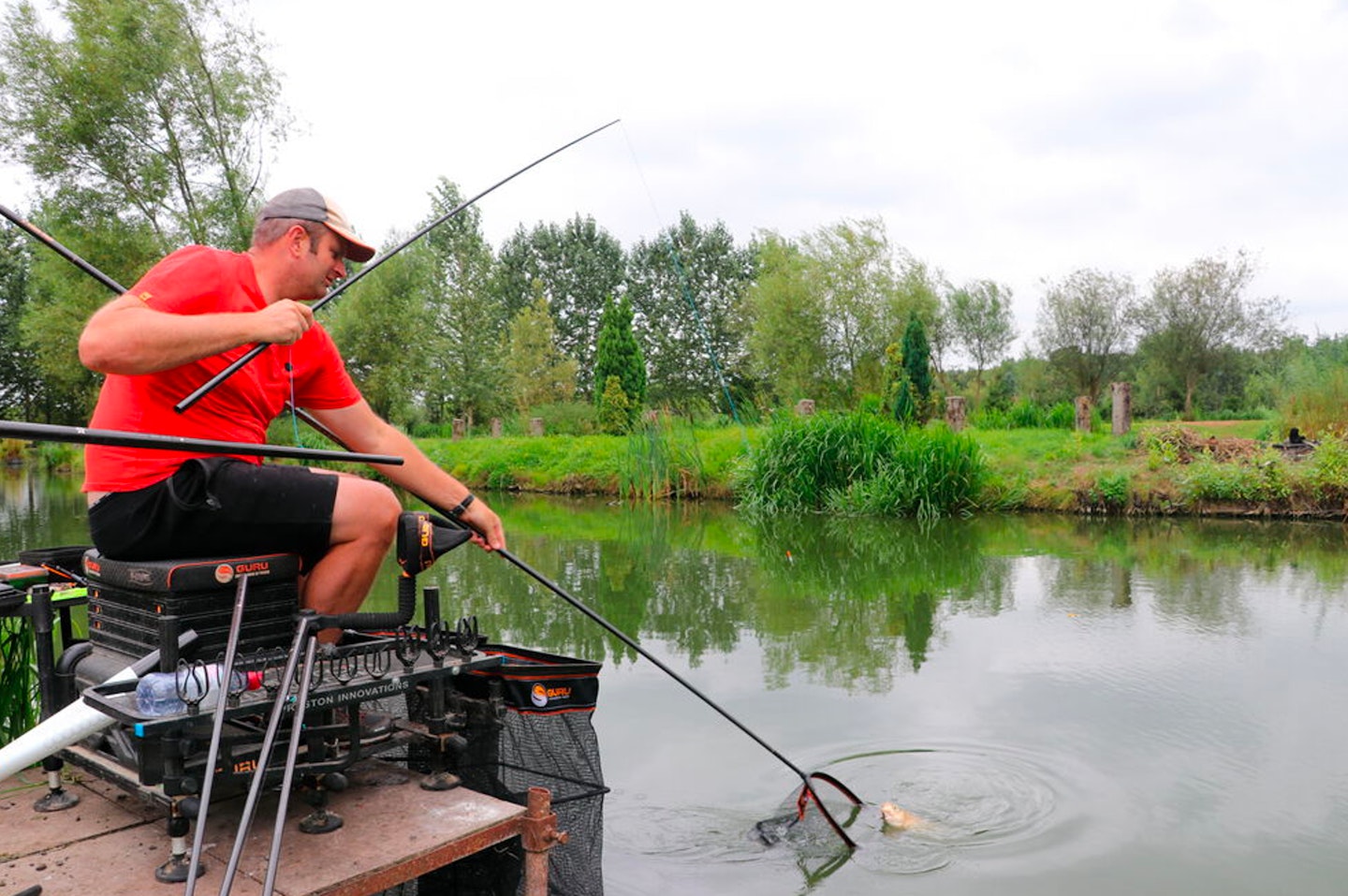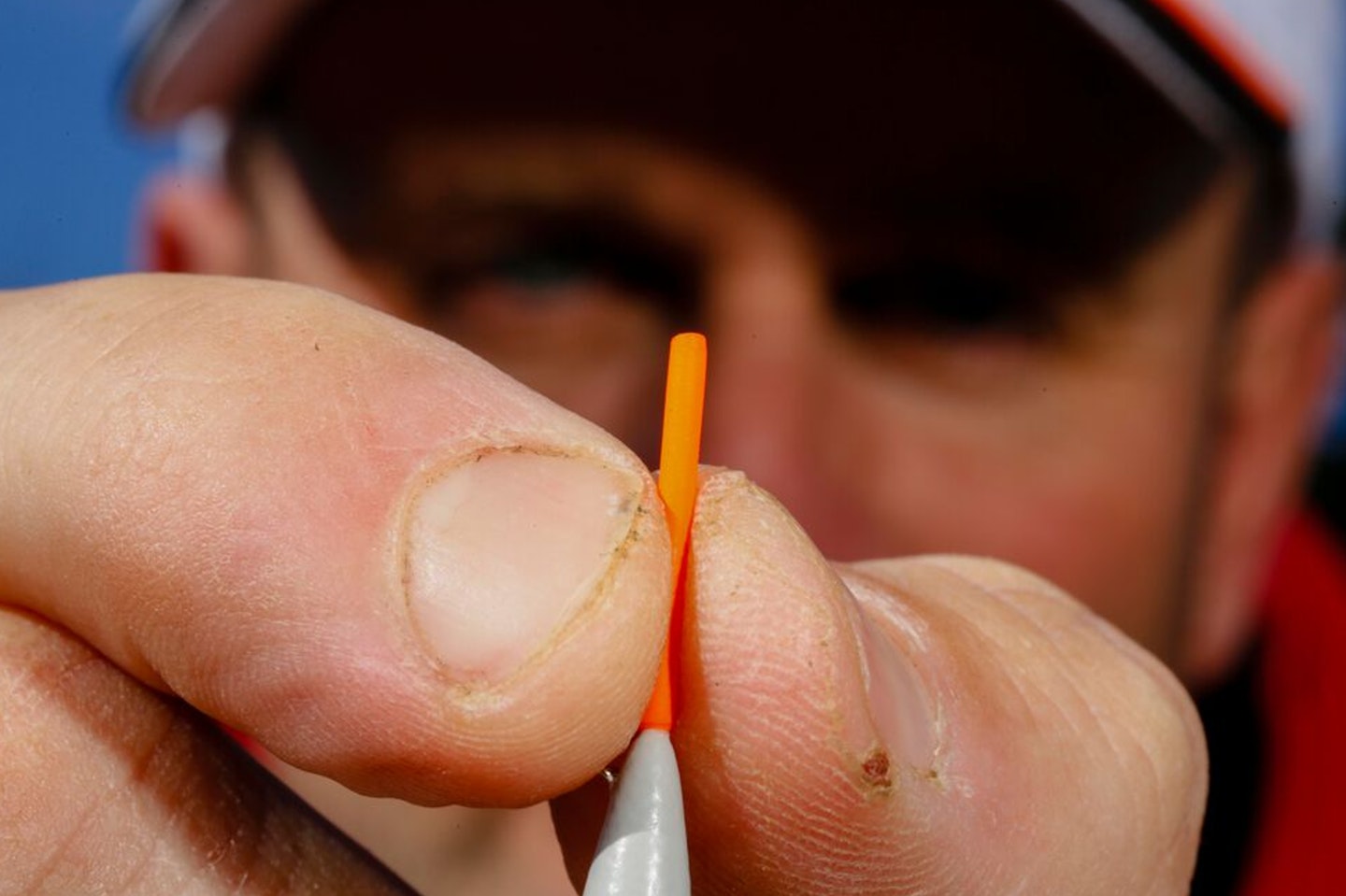Over the years I’ve built up a real mixture of pole floats. Some are tiny delicate things, while you could anchor a boat to others! A lot of them won’t see the light of day, because I find myself relying on three very distinct shapes to do the lot on stillwaters – rugby ball, slim and margin patterns.
However, it’s not just a case of thinking ‘well, I’m fishing deep water today, so I need a float with a big body,’ or ‘the lake is shallow, so I don’t need to fish that heavy.’ Many of my float choices are down to the way I’ll fish and the species I am after.
If I was waiting for a bite, the rig would need to be held in place. Stability is then paramount, so it’s a rugby ball-shaped float. For fishing through the water with a slow-falling bait, a slim float is better, as there’s not such a need for keeping the rig still.
Rugby ball-shaped
Floats with a large body are called rugby ball-shaped. They are the model to go for if you’re after stability when the bait is fished on the deck and left for several minutes waiting for a bite. Try a 0.5g float for shallow water or as much as 2g for deep swims.
THE BEST FISHING POLES WILL HELP IMROVE YOUR ACCURACY AND PRESENTATION.

Slim-bodied floats
Slim floats are sometimes called pencils. Their slender bodies make them great for ‘busy’ fishing when the rig isn’t in the water for long. A slim offers little resistance on the strike and sits up quickly – ideal when bites come as the rig settles.
SLIM PROFILE FLOATS ARE IDEAL FLOATS FOR FISHING CASTERS SHALLOW ON COMMERCIALS.

Margin patterns
Margin fishing requires a unique float, one that takes a lot of shot but has a substantial body. In shallow water, carp can ‘wash’ a light float out of position. A rugby ball-shaped float with a short stem taking 0.4g or 0.5g is the one to go for.
ONE OF THE BEST MARGIN POLES WILL HELP YOU EXTRACT BIG CARP FROM THE MARGINS WITH EASE!

Tip thickness
I don’t measure thickness, instead focusing on bait size. Bites on a big bait like double corn are more positive than on a maggot, so the tip can be thicker. Dotting it right down isn’t always necessary – I leave a bit of tip showing in the margins to read bites.
SEE THE GUIDE TO POLE RIG MAKING, GET YOUR FLOAT SHOTTED PERFECTLY

